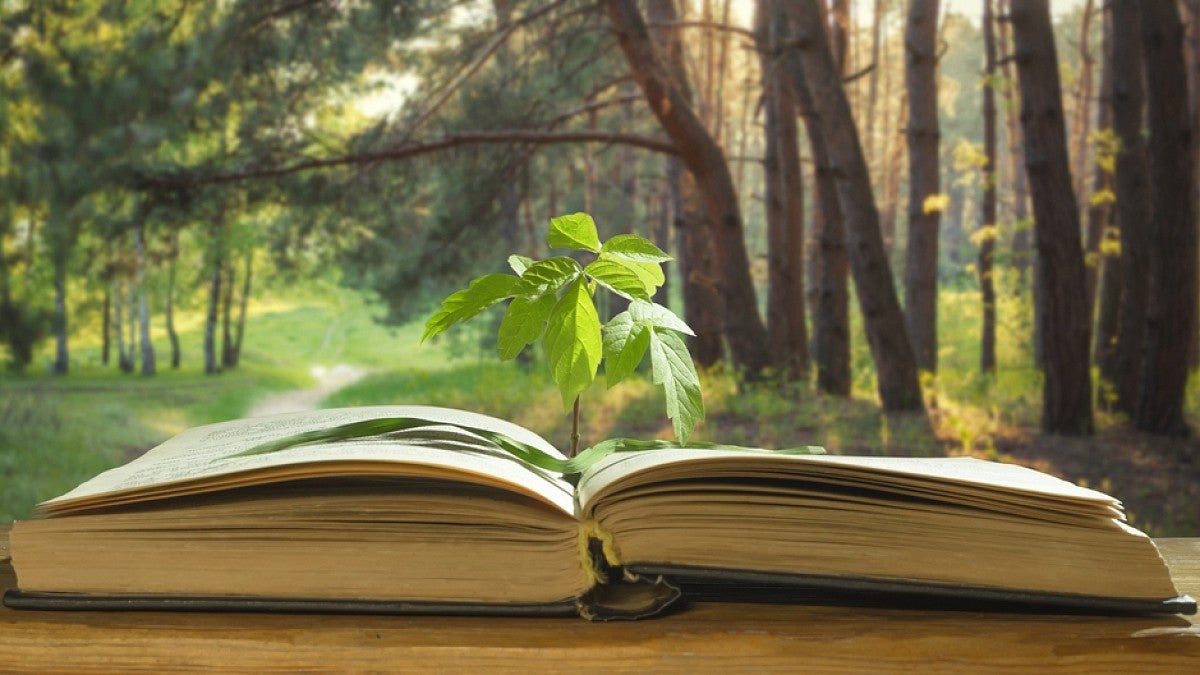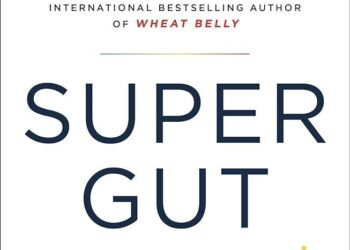Table of Contents
ToggleIntroduction
Environmental Themes In Modern Fiction A Deep Dive Environmental issues have gained more attention globally in recent years, and literature is no exception. Narratives that tackle the intricate and urgent environmental issues confronting our world, such as pollution, deforestation, climate change, and ecosystem destruction, have become increasingly prevalent in modern literature.
In addition to reflecting societal issues, these pieces are effective means of bringing attention to the pressing need for sustainability and environmental preservation, calling for action, and igniting discussion.
There is nothing new about environmental issues in literature. Nature has long been the focus of literary investigation, from early literary works that personified it to Romantic poets who extolled its beauty and mystique. Nonetheless, there has been a noticeable change in recent decades toward depictions of environmental destruction and the need for humans to safeguard the earth that are more serious and important.
Authors are utilizing fiction to engage readers with the world’s environmental crises, biodiversity loss, and climate change effects. They frequently incorporate ecological storylines with more general themes of justice, social reform, and survival.
The Rise of Ecofiction and the Exploration of Environmental Issues
Ecofiction, a genre of literature that focuses on environmental themes, has gained significant traction in recent years. This genre includes novels, short stories, and poems that explore the relationship between humans and the natural world, often highlighting the destructive effects of human activity on the environment. From speculative fiction to literary works grounded in reality, ecofiction offers a diverse array of narratives that challenge readers to think critically about their interactions with the environment.
The Role of Climate Change in Modern Fiction
One of the most prominent environmental themes in modern fiction is climate change. As global temperatures rise, extreme weather events increase, and ecosystems shift, the impact of climate change has become an urgent subject for contemporary writers. Many novels incorporate climate change as a central plot point, using speculative fiction to create dystopian futures or imagining alternative worlds that have already been shaped by the environmental consequences of human activity.
Margaret Atwood’s The Year of the Flood (2009), for example, explores the repercussions of a climate-ravaged world, where genetically engineered organisms and environmental degradation have led to a collapsed society. Atwood’s dystopian narrative paints a grim picture of a future shaped by climate change and ecological destruction, but it also examines themes of survival, human resilience, and the search for hope in the face of disaster.
Similarly, Jeanette Winterson’s The Stone Gods (2007) imagines a post-apocalyptic world where humanity grapples with the consequences of its environmental disregard. Winterson blends speculative fiction with an urgent message about the environmental collapse caused by human activity, reflecting contemporary fears about climate change and its impact on the future of the planet.
Read More
Environmental Justice and Social Change
Another critical aspect of environmental fiction is the intersection of ecological issues and social justice. Many modern works of fiction emphasize that environmental degradation disproportionately affects marginalized communities, including Indigenous peoples, people of color, and low-income populations. These works often explore how environmental harm exacerbates existing social inequalities, drawing attention to the need for more equitable approaches to environmental protection.
In novels such as Parable of the Sower (1993) by Octavia Butler, environmental collapse is intertwined with themes of race, class, and power. Set in a dystopian future where climate change, resource depletion, and corporate greed have led to societal breakdown, Butler’s protagonist, Lauren Olamina, must navigate a world where survival is dependent on both environmental and social factors. Butler’s work challenges readers to consider how environmental degradation and social inequality are inextricably linked, and how collective action can create meaningful change.
Similarly, in The Overstory (2018) by Richard Powers, the novel addresses the devastating effects of deforestation, but it also incorporates the voices of characters from diverse backgrounds, including Native American communities whose ancestral lands are threatened by environmental destruction. The book highlights how communities that are most vulnerable to environmental harm often have the least power to protect themselves, calling for a more inclusive and just approach to environmental advocacy.

The Influence of Ecofeminism in Fiction
Ecofeminism, which explores the connection between the exploitation of nature and the oppression of women, has also played a significant role in modern environmental fiction. Ecofeminist literature often examines the ways in which gender, environmental degradation, and social justice intersect. These works explore the domination of both women and nature by patriarchal structures, offering critiques of the exploitation of both the earth and women in the name of progress and development.
One prominent example of ecofeminist fiction is The Handmaid’s Tale (1985) by Margaret Atwood. While the novel is primarily focused on the oppression of women in a dystopian society, it also touches on environmental themes, including the toxic effects of industrialization on the environment and the connection between environmental collapse and social inequality. Atwood’s novel uses the environmental decline of the world as a backdrop for its critique of patriarchal control, illustrating how environmental destruction can exacerbate the oppression of women and other marginalized groups.
Another notable work is Prodigal Summer (2000) by Barbara Kingsolver, which intertwines the stories of women, nature, and community in a rural Appalachian setting. The novel explores themes of ecological balance, the interconnectedness of all living things, and the role of women in sustaining both their families and the environment. Kingsolver’s narrative emphasizes the importance of a harmonious relationship between people and nature, positioning women as central figures in the preservation of both.
Key Works in Modern Environmental Fiction
Several works of modern fiction have become touchstones in the exploration of environmental themes. These novels not only entertain but also educate readers about the fragility of the planet and the urgent need for collective action to preserve the environment.
Rachel Carson’s Silent Spring and the Birth of Ecofiction
Although Silent Spring (1962) is not a work of fiction, it is often credited with sparking the modern environmental movement and inspiring countless works of ecofiction. Carson’s groundbreaking book highlighted the dangers of pesticides and their destructive effects on ecosystems, wildlife, and human health. Silent Spring raised public awareness about the fragility of the environment and the interconnectedness of all living things, laying the foundation for future environmental narratives in literature.
Carson’s work inspired authors like Ursula K. Le Guin, whose The Dispossessed (1974) explored the relationship between ecological sustainability and social justice. Le Guin’s works often integrate themes of ecological balance and environmental stewardship, using speculative worlds to imagine more harmonious and sustainable societies.
Barbara Kingsolver’s Flight Behavior and the Effects of Climate Change
Barbara Kingsolver’s Flight Behavior (2012) is a striking example of contemporary literature that addresses climate change and environmental responsibility. The novel follows the story of Dellarobia Turnbow, a woman living in rural Appalachia who begins to notice a strange phenomenon: thousands of monarch butterflies have inexplicably appeared in her area. As the story unfolds, Dellarobia comes to realize that the butterflies’ migration patterns have been disrupted by climate change, and the book delves into the personal and societal repercussions of environmental change. Kingsolver uses the monarch butterflies as a metaphor for the vulnerability of both nature and human societies to the impacts of climate change, illustrating the ways in which environmental crises can alter the fabric of daily life.
Richard Powers’ The Overstory and the Importance of Trees
In Richard Powers’ The Overstory (2018), the author weaves together the lives of several characters whose connections to trees shape their personal narratives and their understanding of the world. The novel spans multiple generations and explores the role that trees play in the health of the planet, human relationships, and cultural history. By focusing on the destruction of forests and the global implications of deforestation, Powers highlights the urgency of protecting natural habitats and the deep interconnections between all life on Earth.
Hanya Yanagihara’s A Little Life and Environmental Trauma
Though not explicitly a novel about the environment, Hanya Yanagihara’s A Little Life (2015) contains underlying themes of environmental trauma and the scars left by both personal and collective histories. The novel explores the emotional and psychological landscapes of its characters, juxtaposing personal suffering with the larger social, political, and environmental forces at play. Yanagihara’s work prompts readers to reflect on how environments—whether urban, familial, or natural—shape individual lives and how the trauma inflicted by these environments can echo across generations.
The Role of Environmental Fiction in Shaping Public Consciousness
Modern environmental fiction does more than just entertain; it plays an essential role in shaping public consciousness about environmental issues. These works allow readers to engage with complex topics such as climate change, biodiversity loss, and environmental justice in ways that are accessible, emotionally resonant, and intellectually stimulating. By humanizing these issues and illustrating their real-world implications, environmental fiction encourages readers to think critically about their roles in environmental stewardship and the broader ecological crises affecting the planet.
Read More
Raising Awareness and Inspiring Action
Books that tackle environmental issues provide readers with a deeper understanding of the challenges our planet faces and the urgency of taking action. Whether through dystopian futures that imagine a world ravaged by climate change or hopeful tales of individuals and communities working together to restore balance, environmental fiction serves as a call to action. It challenges readers to consider their own impact on the environment and to reflect on the interconnectedness of human and ecological well-being.
Creating Empathy for Nature
One of the most powerful tools of modern environmental fiction is its ability to foster empathy for nature. By centering the experiences of animals, plants, and ecosystems, these works invite readers to see the world through the eyes of other species and to understand the intrinsic value of the natural world beyond human use. Through rich, sensory descriptions and the exploration of complex ecological systems, environmental fiction deepens our appreciation for the natural world and urges us to protect it.
Conclusion
Environmental themes in modern fiction have grown in complexity and importance as the global community faces increasingly urgent ecological crises. From dystopian narratives about climate change to the exploration of environmental justice and sustainability, contemporary fiction has become a powerful platform for addressing the environmental challenges of our time. These works not only entertain but also inspire, educate, and motivate readers to reflect on their own relationships with the environment and to take action for the future of the planet.
As the world continues to grapple with the consequences of environmental degradation, the role of fiction in shaping public consciousness and sparking change will remain crucial. Through the works of authors such as Margaret Atwood, Barbara Kingsolver, and Richard Powers, environmental fiction will continue to play an essential role in raising awareness, creating empathy for nature, and challenging society to rethink its environmental responsibilities.
Read More
FAQ
1. What is ecofiction?
Ecofiction is a genre of literature that focuses on environmental themes, exploring the relationship between humans and the natural world. It often addresses issues such as climate change, environmental degradation, and sustainability, using storytelling to raise awareness and encourage action.
2. How does environmental fiction raise awareness about climate change?
Environmental fiction raises awareness about climate change by incorporating it into the narratives of the stories. Authors use speculative worlds, dystopian futures, and realistic settings to explore the consequences of environmental collapse, encouraging readers to reflect on the urgent need for action.
3. What role does ecofeminism play in environmental fiction?
Ecofeminism in environmental fiction explores the intersection of environmental degradation and the oppression of women. It critiques patriarchal structures that exploit both women and nature and emphasizes the need for more equitable and sustainable practices that consider both social justice and environmental stewardship.
4. Can environmental fiction inspire real-world change?
Yes, environmental fiction can inspire real-world change by fostering empathy for nature, raising awareness of pressing environmental issues, and motivating readers to take action. These stories encourage reflection on personal responsibility and highlight the interconnectedness of human and ecological well-being.
















